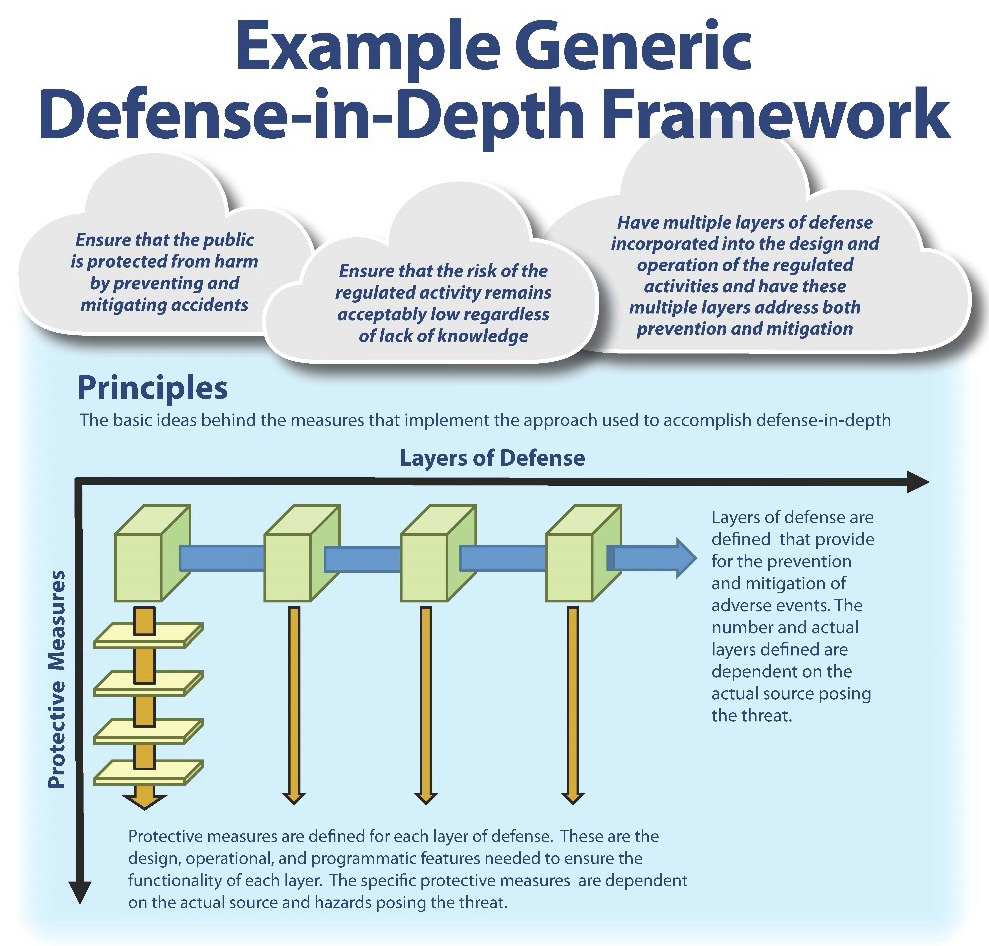Part II: How the NRC Uses a Defense-in-Depth Approach Today to Protect the Public
Posted by on July 13, 2016
Senior Program Manager
Division of Risk Assessment, Performance and Reliability Branch
Defense-in-depth is a central theme in the NRC’s regulatory oversight of the nuclear power industry. As our agency historian, Tom Wellock, discussed in Monday’s post, the concept of defense-in-depth emerged during the trench warfare of World War I. The idea of multiple lines of defense was applied to nuclear safety in the 1950s as the leading concept for protecting the public from the consequences of a nuclear reactor accident.
The NRC’s predecessor agency, the U.S. Atomic Energy Commission, spelled out defense-in-depth in a 1957 report called WASH-740, Possibilities and Consequences of Major Accidents in Large Nuclear Power Plants. “Should some unfortunate sequence of failures lead to destruction of the reactor core … no hazard to the safety of the public would occur unless two additional lines of defense were also breached,” the report said.
These words are at the heart of defense-in-depth as it has been practiced for six decades: multiple layers of defense to protect against accidents and their effects to ensure the risk to the public is acceptably low.
In a recent report issued this spring, Historical Review and Observations of Defense-in-Depth (NUREG/KM-0009), the NRC looks at how the concept has evolved in practice over the years. It also includes views from other government agencies and the international community.
As the report explains, defense-in-depth recognizes that our knowledge is imperfect. Although we plan for all conceivable accidents, the unexpected may still occur. Even if we have anticipated an event, its characteristics and impacts may be unpredictable. Our design and operation of nuclear plants need to be robust enough to compensate for this lack of knowledge. Defense-in-depth offers multiple layers of protection in case one or more layers fail.
So we don’t just rely on preventing an accident; we also need strong defenses to mitigate the effects of any accident that does occur. This applies to nuclear power plants, waste management and security as well.
In practice, defense-in-depth addresses three principles that should be factored into the design and operation of systems and components to provide additional confidence that an accident would not compromise the defensive layers:
- Redundancy means more than one component performs the same function – for example, having multiple pumps instead of a single one;
- Independence means these multiple components rely on separate and distinct attributes to function – the multiple pumps have separate piping from the water tank to where they discharge, and are housed in separate compartments; and
- Diversity means the multiple components performing the same function rely on different design features to operate – motor-driven pumps versus steam-powered pumps.
 In reactor safety, the layers of defense might be:
In reactor safety, the layers of defense might be:- Maintain reactor stability by limiting the ability of events to disrupt operation (with protective measures such as fire-safe or flood-tight doors, seismically designed buildings)
- Protect the reactor should operation be disrupted (emergency reactor core cooling with redundant pumps)
- Barrier integrity to guard against a release of radioactivity to the environment (leak-tight containment structures, filtered vents, containment sprays) and
- Protect the public if a release does occur (emergency preparedness plans)

No comments:
Post a Comment